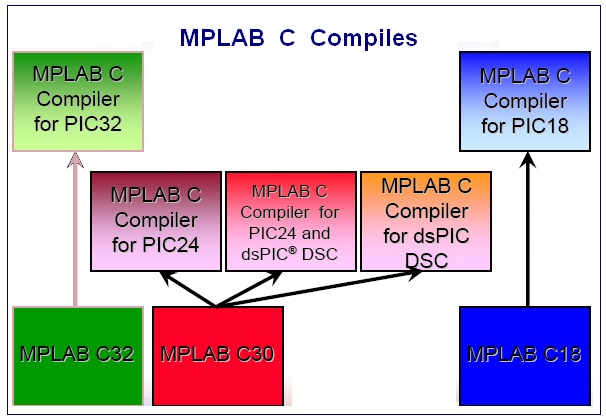Universitatea Tehnica Iasi - Fac. Automatica
si Calculatoare
Embedded Computer
|
Luni, 4 Feb., 119
Ora 9:17

|
 |
Lucarea de laborator nr. 1

|
Instrumente pentru dezvoltarea aplicatiilor cu DSC (Microchip&Freescale)
*Alternativa MICROCHIP
Alternativa Freescale
|
L1.1 Prezentare generala, scop.
|
The lab paper aims to provide a presentation of the hardware / software tools needed to develop applications with DSC (Digital Signal Controller) systems. It aims to install and configure programming environments and code transfer technology on target systems. At the end of the paper, the students will be familiar with how to use MPLAB C30 and GNU C (C30) compilers to obtain executable code for dsPIC (Alterntiva CW Freescale for 56F8xxx)

DSPIC 30
DsPIC Starter Kit 1 development system,
MPLAB C30 USB interconnect cable .

Prototype Program
Guide dsPIC DSC Starter Kit
|
E1.5 Exploration / Tracking Experiment:
|
- MPLAB C30 is punched on the PC using the dsPIC Digital Signal Controller CD;
- Connect the USB cable between the PC and the dsPIC DSC Starter kit board to transfer the code.
- It analyzes the schematic with the main components of the development system insisting on the connection of the 3 LEDs;
- A project with source L1.c is made in a personal directory;
- Configure MPLAB and the corresponding programmer accordingly;
- It is intended to get the HEX file and transfer it to the dsPIC DSC Starter Kit;
- Analyzing files resulting from the compilation process;
- The correct execution of the program is being monitored;
- Draw the program on the target system;
- Solving prototype issues;
- - Analyze the main components of the development system by following MICROCHIP (video) presentation; and forresistent;
- - Analyze components in the dsPIC / 56F8000 structure;
- - Examine the software resources involved with MPLAB c30 and CW for DSC;
- - Analyze the contents of the dsPIC DSC library modules in MPLAB c30;
- - Examine PWM resources for BLDC control;
- - Examine the assembly code generated for the prototype program;
1. Make a program sequence that will display 2 control sequence LEDs for a one-pole stepper motor;
2. Modify the prototype program so that the ignition frequency of the yellow LED is 1 second;
3. Create a program that will allow the oscilloscope to visualize the maximum frequency that can be generated at the RC13 output;
4. Make a sequence program to activate the 3 sequential left shift LEDs, the observable frequency.
5. Make a sequence program to activate the 3 sequential left shift LEDs, the observable frequency.

|
L1.7 The experiment may be extended to:
|
- Bipolar stepper motor control using optical couplers; - Realizing USB-to-PC peripherals; - Establishment of human-operated control systems;

|
L1.8 Documentary references:
|
 © 2019 Fl. Pantelimonescu - Fac. Automation and Computers Iasi © 2019 Fl. Pantelimonescu - Fac. Automation and Computers Iasi
|
|



